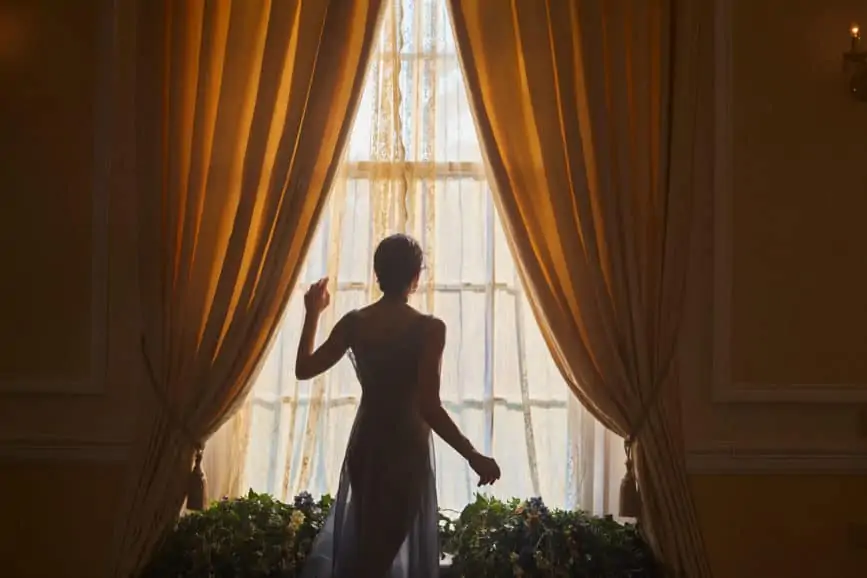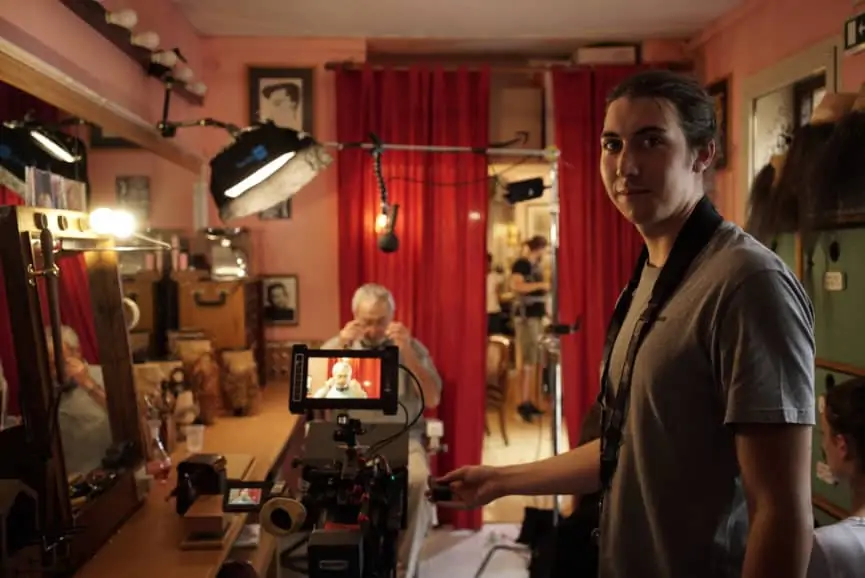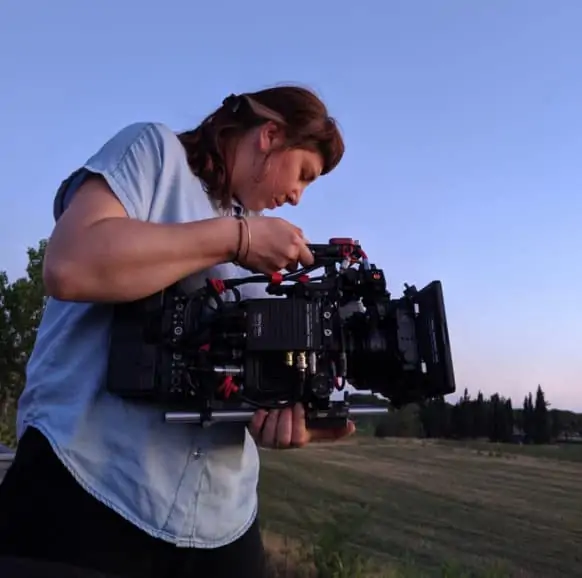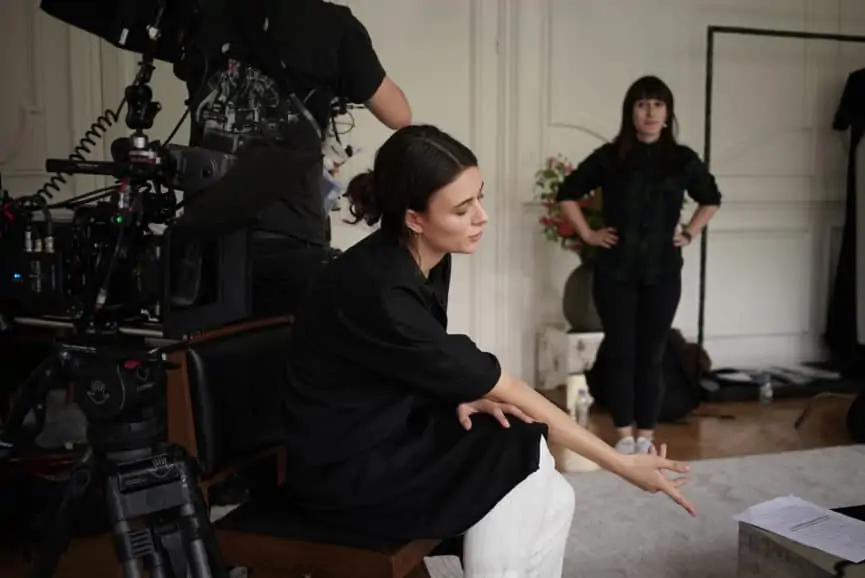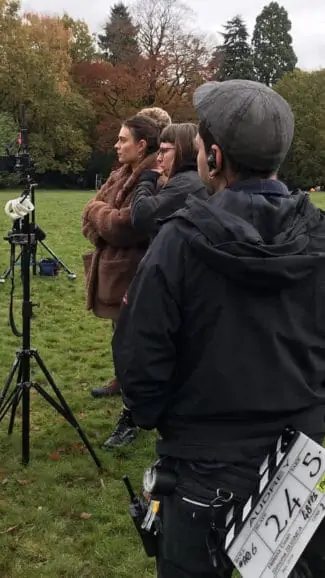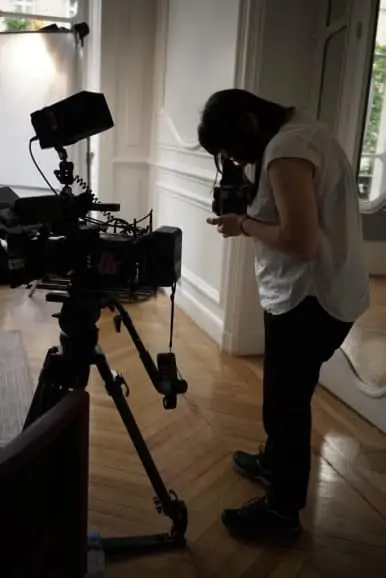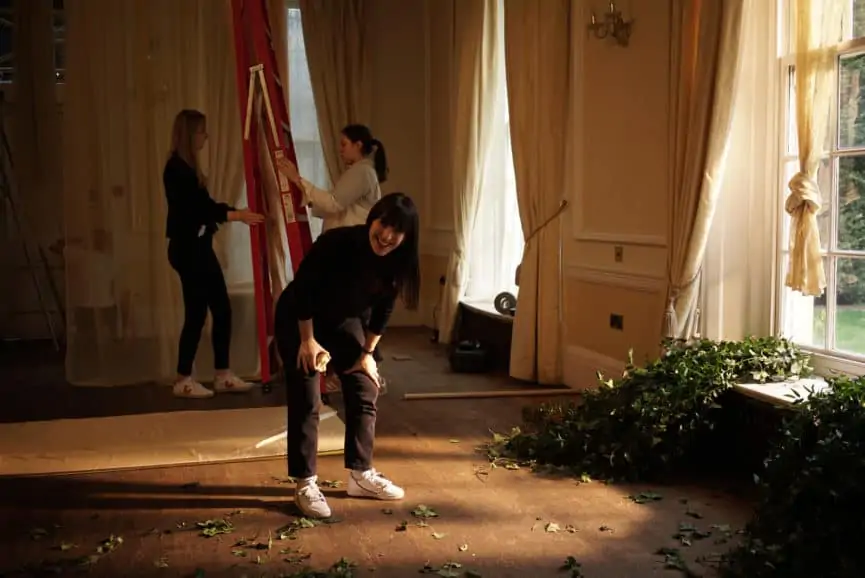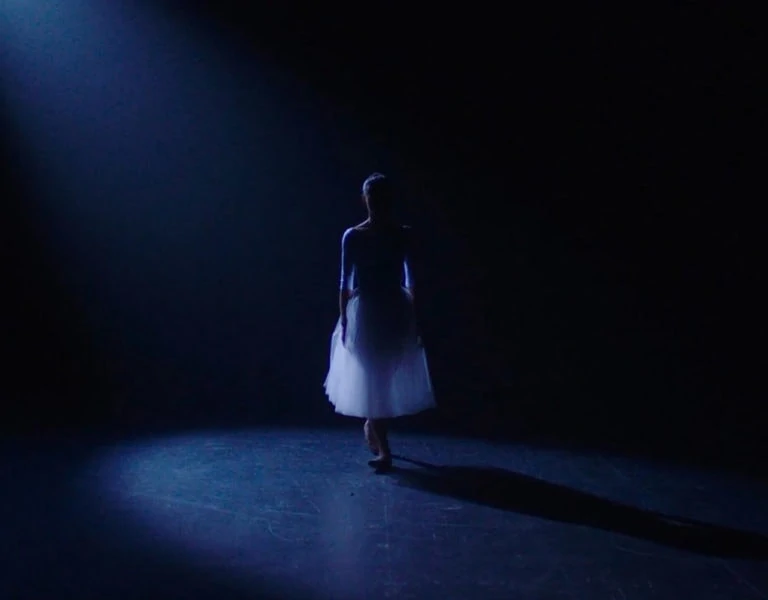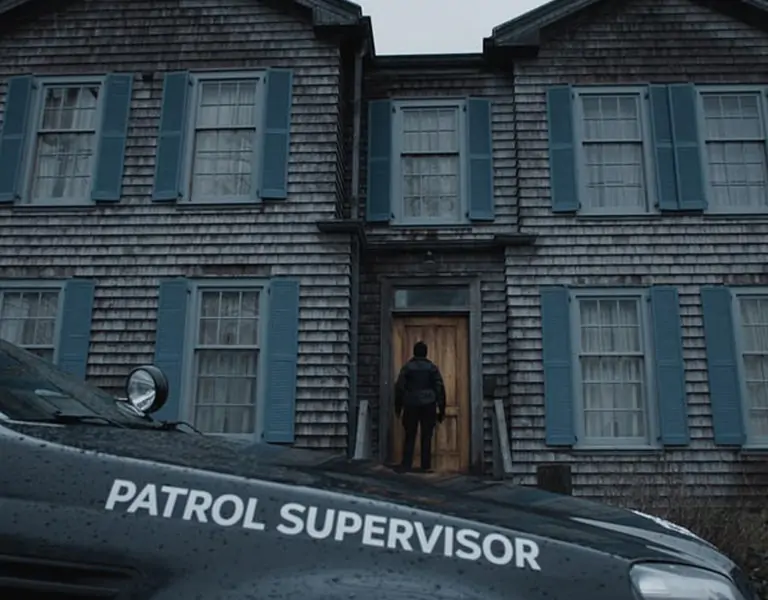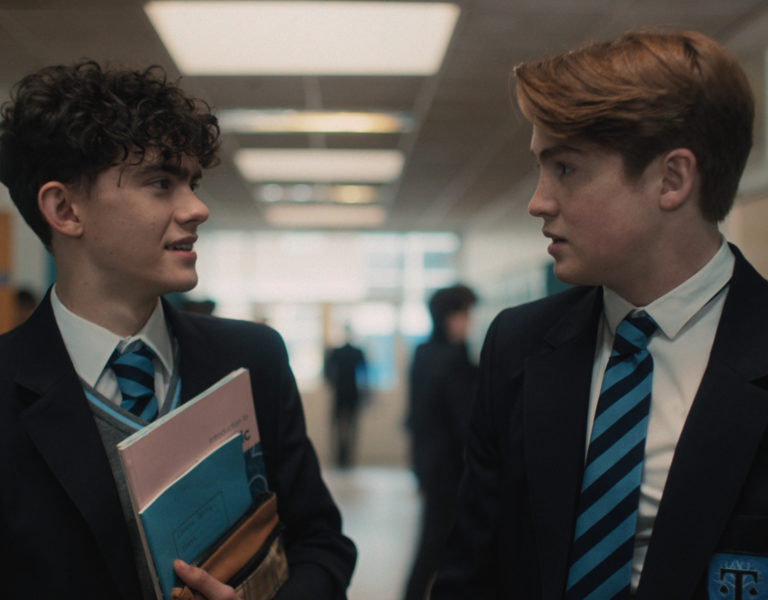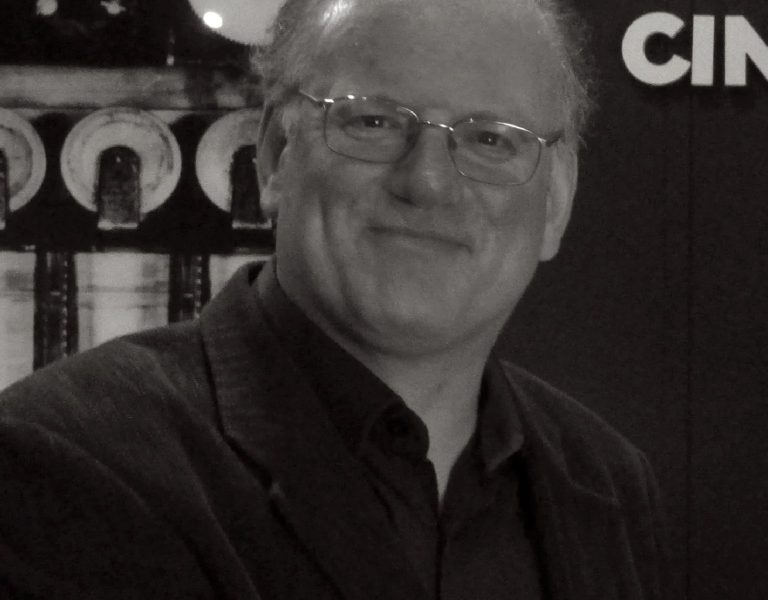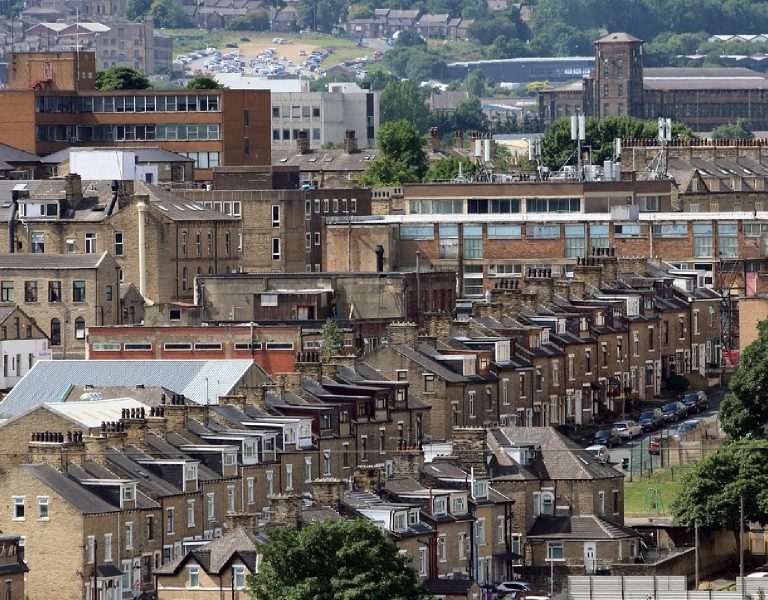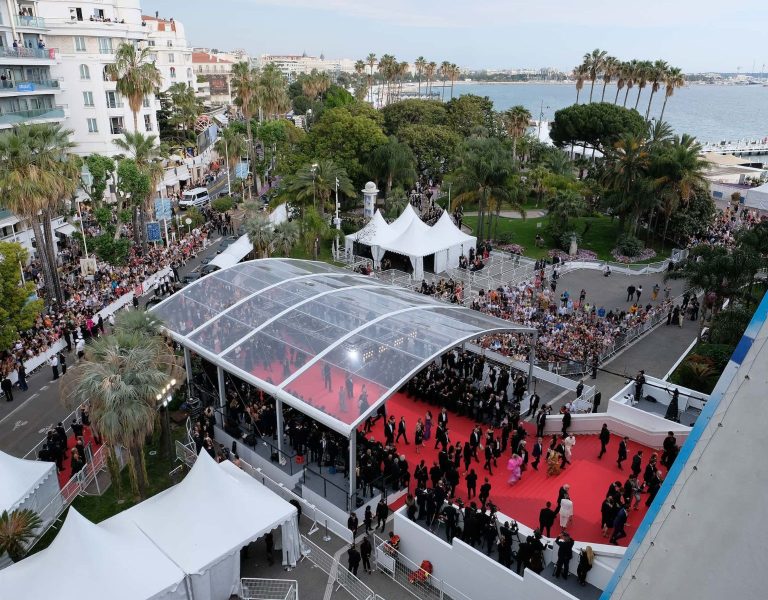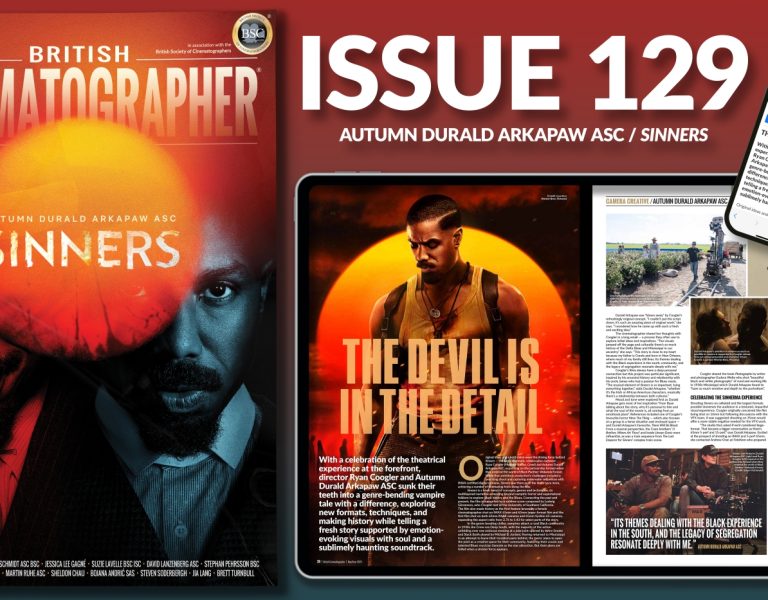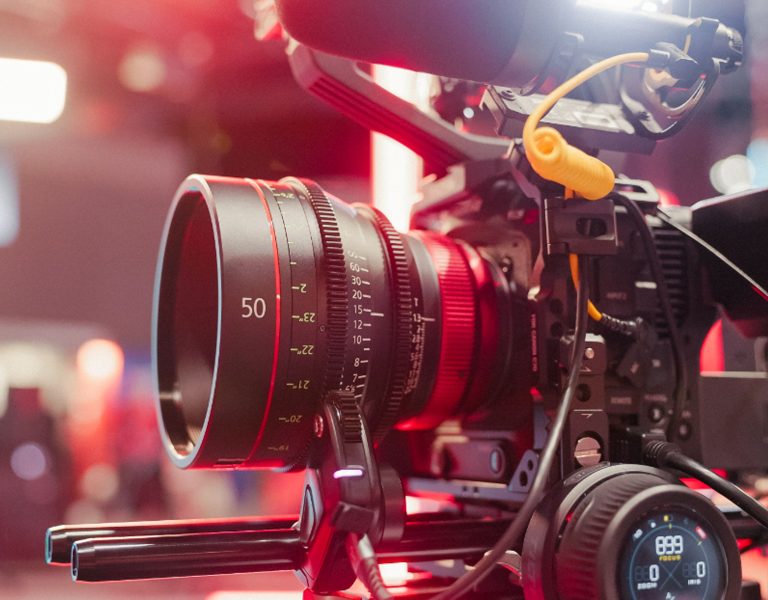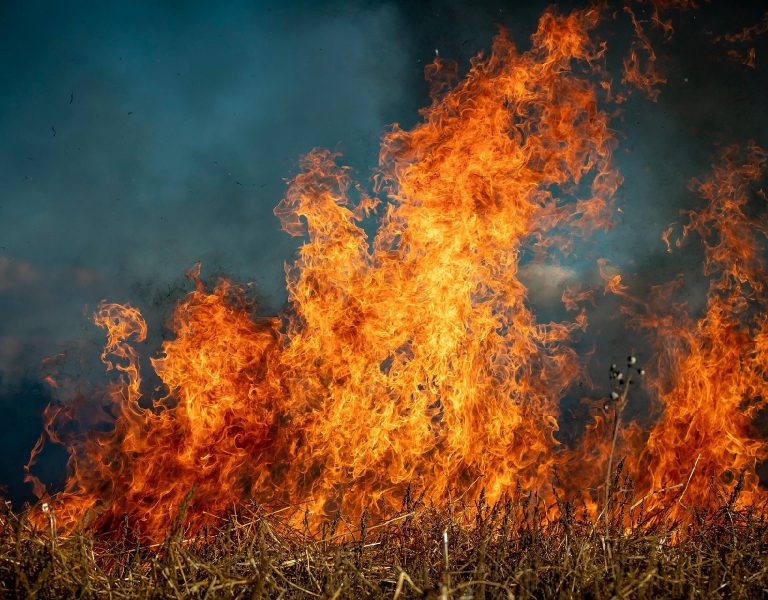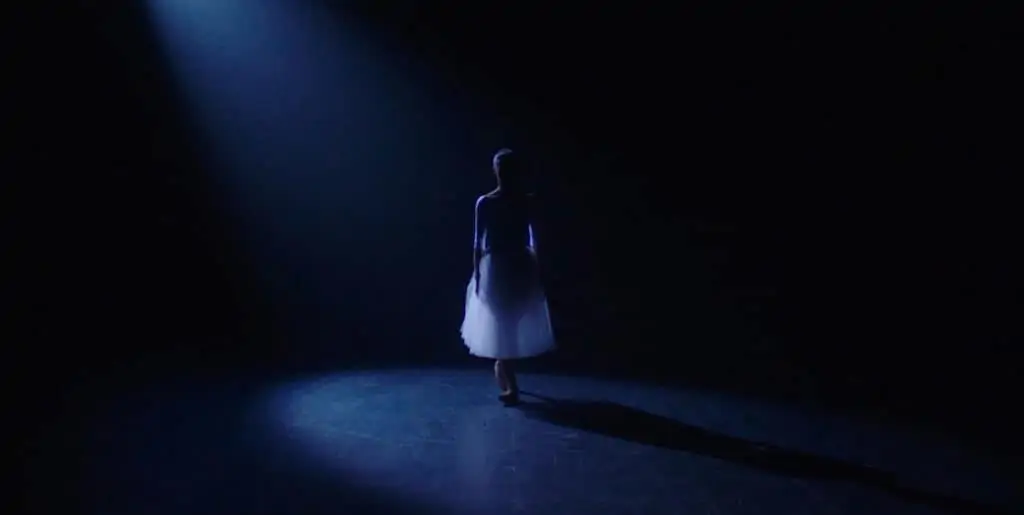
Feature documentary Audrey: More Than an Icon explores the life of Hollywood star, fashion icon and humanitarian Audrey Hepburn through a mixture of interviews, archive footage and narrative scenes. Cinematographer Simona Susnea shares the creative and technical production processes behind the powerful dance sequences inspired by Hepburn’s love of ballet that support the narrative and focus on pivotal moments in the star’s life.
“I have always loved Audrey Hepburn,” says Susnea. “I remember watching Breakfast at Tiffany’s as a film student. Shooting this film was an incredible journey and when I met director Helena Coan I was excited by the idea of using dance to tell Audrey’s story and have a narrative approach to the dance. I thought it was a challenge and also an amazing opportunity for me as a cinematographer. I loved the idea of creating a story with movement – I haven’t really seen that before in a documentary.”
The research process for the dance sequences revolved around exploring Coan’s script, understanding the choreography that would support it and generating original ideas for how it would be filmed. Discussions began by considering the mood of each scene and how the low-key lighting and colour could create a feeling of loneliness, absence and lack of connection with Hepburn’s father.
Embracing the contrast between the black and white archive, footage from Hepburn’s films and the visually rich dance scenes was a priority. “We liked that variety,” says Susnea. “We didn’t want something that felt linear. We talked about aspect ratio and considered moving away from 16:9, but we were concerned it would be too jarring to cut from widescreen to 16:9 and 4:3. Otherwise, we were keen to make the dance visually distinct.”
References and inspiration included ‘60s Russian film War and Peace, in particular a scene in which the camera movement is expressive and had a very interesting approach. “The film used foreground elements and fabrics to create transitions and wipe from shot to shot, which I showed Helena,” explains Susnea. “I also looked at very different visual approaches to filming dance, like in the Belgian film Girl and the Café Müller dance choreographed by Pina Bausch, but it was mostly photographic references that we used in our conversations.”
Production designer Alexandra Toomey, Coan and Susnea then explored the mood, colour palette and visual elements that would enhance the narrative. Toomey suggested using fabrics to divide a room in which dance sequences featuring later in the documentary would be filmed, to divide up the space and create separation and depth.
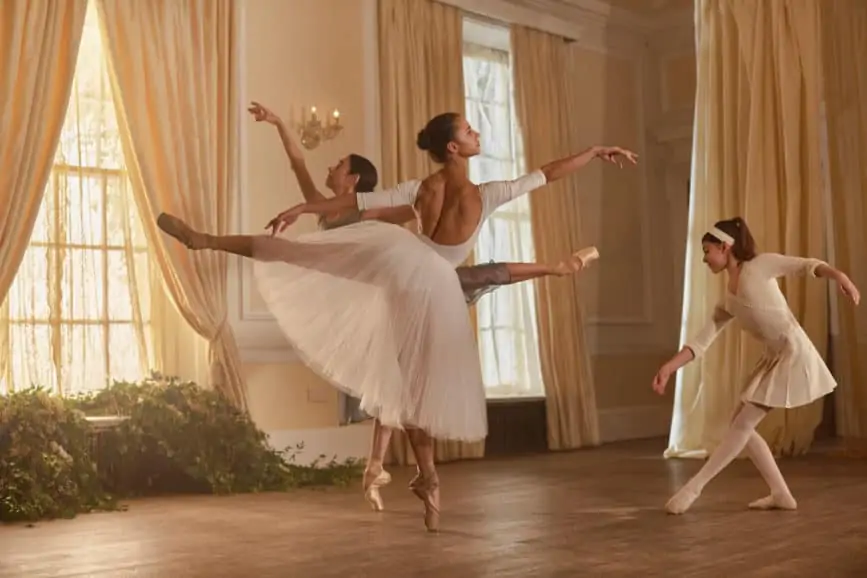
“As we would be working 360-degrees in that space, seeing an empty room could become boring, but the fabrics would help us achieve a feeling of intimacy with the dancer. Alex also had the great idea of using flowers to elevate a feeling of transition into afterlife,” says Susnea.
A close collaboration with other members of the production team, including producer Annabel Wigoder, who Susnea refers to as a “magician,” and 1st AD Robyn Henderson, were also crucial to the success of filming the dance sequences the way the director and the cinematographer envisioned it. “Most of our HODs were female. I think as women we had a strong connection with Audrey and her story and it empowered and inspired us to make the film,” she says.
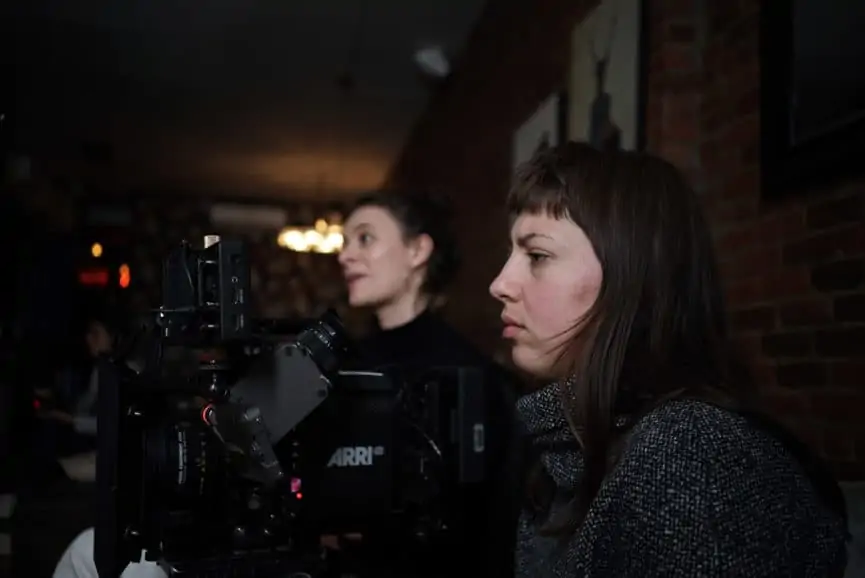
“I also had a great collaboration with gaffer, Bill Rae Smith and our very talented Omega AR operator, Will Lyte, who worked tirelessly to achieve the shots Helena and I wanted.”
A personal production
Cinematographer Susnea was impressed by Coan’s desire to make the film personal and to reveal the depth of Hepburn’s personality. The director wanted to make the film because she believes Hepburn is a “hero.”
“She is remembered, rightly so, for her beauty and her fashion, but there is another side to Audrey that is relatively unexplored. Audrey suffered great tragedy and trauma in her life, but she was always able to transform this into something better, and more beautiful,” says Coan.
The choice to use dance to narrate Hepburn’s life was important to director and cinematographer alike. “I love movement and having a such a strong narrative built into the choreography was a real challenge and a one-of-a-kind opportunity for me as a cinematographer,” says Susnea.
A detailed pre-production process saw Coan and Susnea explore the writer/director’s script, which looks at different stages of Hepburn’s life. They discussed it in detail while attending three weeks of rehearsals with multi-award-winning choreographer Wayne McGregor CBE and dancers Francesca Hayward, Keira Moore and Alessandra Ferri to get a sense of the choreography.
“Dance magnifies Audrey’s emotional landscape and brings a heightened sense of drama and theatre to the film, as well as a rich visual language which has not yet been used in documentary. It is a creative tool which elevates the storytelling, and a homage to Audrey’s true passions, which we feel she would have understood and appreciated,” says Coan.
Based on Coan’s clear vision for each scene, Susnea filmed the dance rehearsals, capturing the choreography in rough sketches that would emulate the camera movement they intended to use for each moment in the script. After filming the choreography, they created a paper shot list developing further how they wanted the camera to move, at what pace, angle and shot size was best suited for each scripted moment.
“This acted as a guide and gave us a clear understanding of what we wanted to achieve with each section because the schedule was so tight, we couldn’t afford to figure that out on set,” adds Susnea.
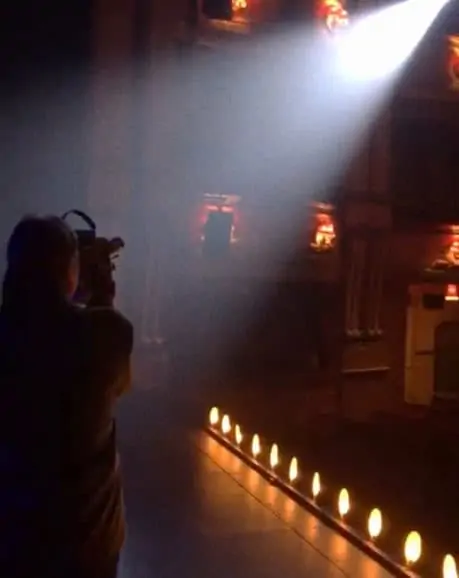
Connection between choreography and camera
The strong connection between the camera and choreography enhanced the production and its storytelling power. The team discussed which frame size would best suit a particular moment in the choreography and when filming Keira Moore, who plays Hepburn at a young age, choreographer McGregor would sometimes adjust Moore’s dance, creating more fluidity between the camera and her movement.
Lighting was used as a narrative tool throughout, its effect heightened by colour. In one scene in which we see Hepburn as a child, blue low key coloured light is used to convey rejection from her father. “Darkness becomes a metaphor in a sense because she transitioned from great challenges and trauma into someone quite beautiful. She chose life and love and lighting was key in showing that transition in her life and throughout our scenes,” says Susnea.
“During Audrey’s childhood when she didn’t receive much love from her father, we use blue tones in the lighting. In the main theatre scene, which we filmed at the Royal Theatre in Brighton, when Audrey is dancing alone, I used the same approach with low key, high contrast lighting, where her face was only revealed at times, when she’s facing the light. Otherwise, she’s just a figure and I liked that symbolism.
“Many people refer to her as being like a silhouette – the structure of her body, the simplicity of her style – so I wanted to translate that on screen with the ballet scene on the theatre stage, and preserve a sense of mystery to her character. The colour choice here, came from creating a moody atmosphere that was in contrast to the warmth of the floor stage lights and the hard, powerful spot on her.
“I went for lavender tones in the key light because I thought it revealed her vulnerability and strength. Initially I looked at a lighter pink tone but didn’t think it was the right choice to represent her character. “I wanted the lighting to be simple and make her stand out, but also add a striking element to the scene and I think the contrast in the lighting helped me achieve that,” says Susnea.
A trio of ARRI Sky Panels S60 were rigged from the top of the stage looking down to create a soft level ambient for the dancing area. Gaffer Bill Rae Smith also rigged an LED PAR source at the far end of the theatre stage, as a blue backlight, controlled through an iPad, so the colour and level could be easily changed.
“Creative conversations with Bill early in the process allowed him to understand what we were trying to achieve with the lighting, which was essential as the schedule was so tight and we had three days to film the sequences which really needed four or five. We like to plan ahead, adds” Susnea.
For certain scenes, filmed over two days in a stately home in northwest London, the production team wanted to narrate Audrey’s life from a young age, into stardom and adulthood and eventually symbolise Audrey’s transition into the afterlife and being at peace with her choices. These scenes were divided into several looks.
“For one look we created a very cold and dark atmosphere where Audrey’s father is rejecting her. In another room we opted for warmer natural lighting to enhance the idea of a home when Audrey is young, and then in a few more saturated golden scenes, the warmth symbolises Audrey’s kindness, acceptance and love, which we created using a combination of chocolate and straw gels on our main light sources.”
During the filming of these sequences, Susnea experimented with iris pulls when transitioning from wide shots to close-ups. “There were slightly darker areas in the room, so I wanted their faces to be seen and often opened to T stop to 2 – from 2.8 or 4 – when the camera was closer. For one shot with dancer Alessandra, we softened the main light sources to naturally darken the room and mark the end of a scene.”
All the scenes were lit through the windows to offer the camera and dancers freedom to move, and also to achieve a level of depth and authenticity in the lighting. For the stately home, the main light sources were two 18K HMIs that helped us push in sunlight into all these rooms or create heavily diffused, low key lighting when the HMIs were bounced into large frames. Some windows, which were less prominent, were lit with small HMIs to achieve a level of consistency across the space.
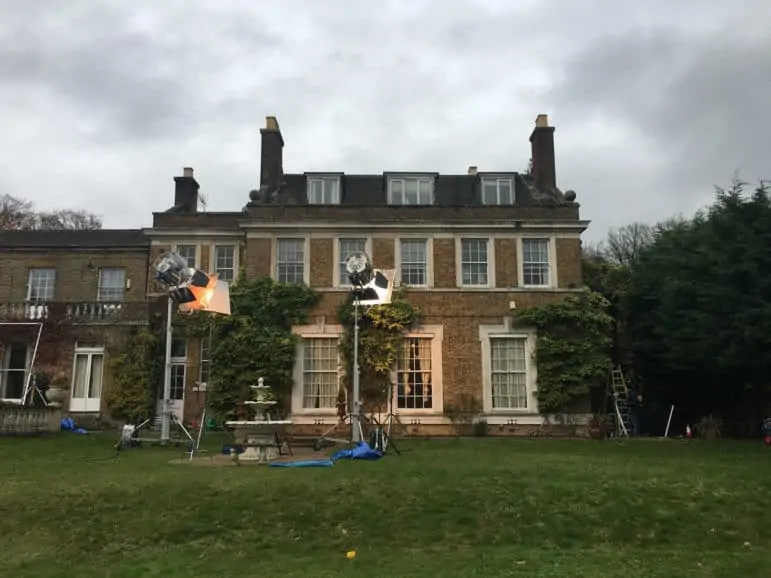
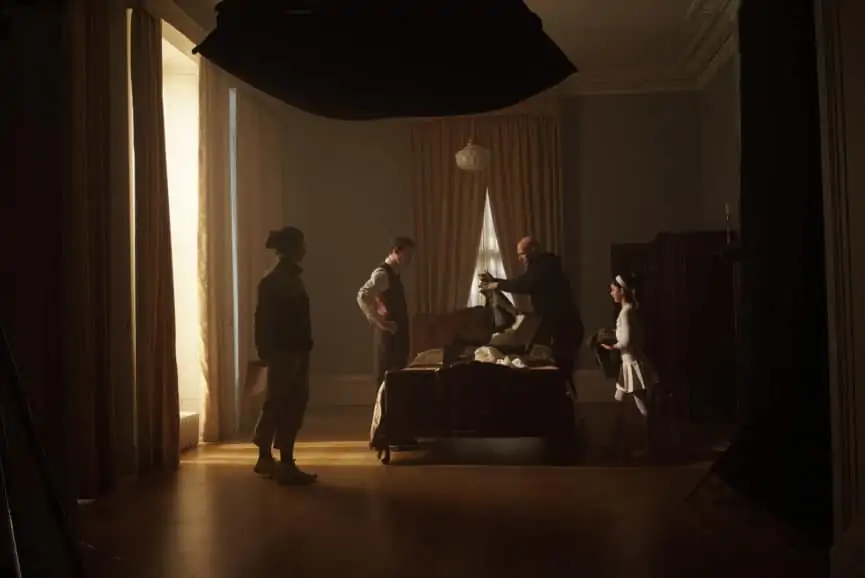
Floating with the dance
Shooting on the ARRI Alexa Mini was a creative and practical choice. Having filmed previous productions using the camera, Susnea was already familiar with the image quality and texture it produced.
“Before shooting the dance sequences we were travelling so much between LA, New York and Europe filming the interviews that we needed the kit to be compact without compromising on quality,” she says.
“This was especially true for the dance scenes because we used a Steadicam AR rig and our Omega AR operator, Will Lyte, needed the camera to be light and small so he could move easily and quickly. We wanted the Steadicam to float with the dance.
It was clear from the beginning that the sequences would be shot using Steadicam to achieve fluidity of movement and a dreamlike quality. “The camera was on an Omega AR rig the whole time, which allowed us to follow the dancers and heighten the emotion of their movement.
“We were shooting long developing shots, from one to several minutes and the camera changed pace often during a take, with the rhythm dictated by the pace of the choreography, the music and Helena’s script. I like the spontaneity and fluidity of the camera and the rig allowed us to place the camera quite low and immediately transition to different heights and angles seamlessly.
Susnea shot the film’s interviews on vintage Cooke S2 Pachro lenses. “We filmed many interviews before the dance sequences, so it was important the lenses had a softness and didn’t create a modern look. Audrey was at her peak in the ‘60s and we wanted some of that to be reflected in our look, even if it was subtle,” she says.
“I looked at these interviews like they were portraits and the Cooke S2s gave me that beautiful soft quality, with a lot of imperfections I could control, because the camera was static and we were lighting carefully.”
For the dance sequences, Susnea used Canon K35s. “We had a beautiful, rehoused set. I wanted a bit more control over the image and less aberration and distortion at the edge of the frame, since the dancers were moving freely. The Canon K35s gave me a bit more sharpness and beautiful skin tones.”
The DP worked with former collaborator colourist Vic Parker from Raised by Wolves to achieve the desired look in the grade. “I enjoy being part of the colour grade because it’s when everything comes together,” she says. “I love Vic’s attitude and attention to detail – how careful he is with the material. When we got to the DI it was important to get the best out of the material but also understand that level of contrast we wanted.
“Helena and I wanted quite a dark look and we did several passes to see how far we could push it. It took a while to achieve to the right level of contrast whilst still treating the skin tones with care. We needed to make sure the ballerinas looked great and that we also achieved a strong cinematic look. It was also crucial to work through the details and be very careful how we transitioned from interviews to black and white archive footage. We didn’t manipulate the images too much, we wanted it to feel organic and I think we achieved that.”
By Zoe Mutter
